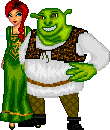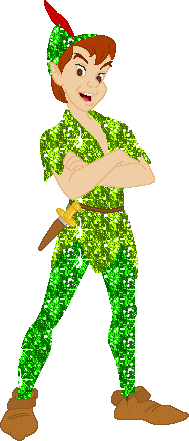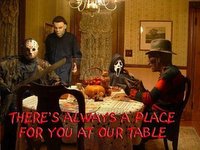DreamWorks Animation SKG emerged in 2004, along with its most successful film sequel Shrek 2.the "biggest CGI movie ever, grossing £470million"[1], becoming Disney’s biggest competitor. Unlike most animated films, it challenged the normal codes and conventions expected from this genre by using Levi Strauss’ theory through reversing the binary opposition, making an ogre a “hero” and the fairy godmother a “villain” in Propp’s character roles. This could be down to post modernism as they don’t believe traditional values.
Saturday, December 30, 2006
DreamWorks Animation SKG emerged in 2004, along with its most successful film sequel Shrek 2.the "biggest CGI movie ever, grossing £470million"[1], becoming Disney’s biggest competitor. Unlike most animated films, it challenged the normal codes and conventions expected from this genre by using Levi Strauss’ theory through reversing the binary opposition, making an ogre a “hero” and the fairy godmother a “villain” in Propp’s character roles. This could be down to post modernism as they don’t believe traditional values.
Friday, December 29, 2006
" I told you ogres don't live happily ever after!"
How are heroes/heroines and villains typically represented in contemporary animation films? Paying close attention to Shrek 2 (2004)
or
"I want what any princess wants - to live happily ever after… with the *ogre* I married."
How are heroes/heroines and villains typically represented in contemporary animation films? Paying close attention to Shrek 2 (2004)
Villains come in all shapes and sizes, but in popular art there are a few sure fire methods to help people identify who the enemy is.
With the wicked Queen from Snow White, again we see the fang shape in the collar of the cloak, and the narrowed, tricky eyes. The mouth too reveals constant displeasure. The heart shape of the face does not relieve the feeling of malevolence.

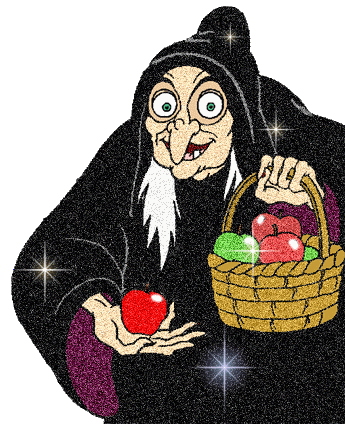 And when she turns into the witch, a new set of
And when she turns into the witch, a new set ofCharacteristics come into play: The eyes this time are large, but the irises and pupils are lost in them, appearing small, and giving the cue that you are not
Liked. Fang shapes appear in the way her hair hangs in tufts, in her nails, and in rounded form in the nose, mouth and chin. Angry brows are often present.
The sideways look also makes her look shifty. The ugly gaps in her dentition and the wart on her nose add little to the appeal, indeed, they constitute another sentic form – the bringer of disgust.

Interesting to compare the eyes
and the downturned mouths in Snow White’s Queen,and the Stepmother in Cinderella. And the appendages to her head designed to give greater height and impressiveness.

In the Sleeping Beauty, the malevolent force here also reveals the fang shape in the horns on her head, and the shapes of her cloak drapery. Her companions too reveal these shapes – the crows in the shapes of the beak and wing feathers. And she turns into a quite magnificent dragon.
And in the magnificent Cruella de Ville – pointy cheekbones, chin, and mouth corners. Often angry brows, and fanged hair and nails.

And then there is the legendary Captain Hook. Not much here in the way of fang shapes – a hint in the eyebrows and moustache, the pointy chin and nose, and of course the hook itself. But here the main message is carried by wilful chin and posture, the clenched fist and angry brow and mouth.
http://www.wavecrest.org.uk/wavecrest/Quest%20tease%2010.htm
My independent study focuses on the representation of how heroes and villains are typically represented in animated films. I decide to use shrek 2 as it is a post modern text and it subverts the usual expectations of a typical hero as shrek is an ogre, where in more liberated times he would have been seen as a villain. Furthermore, in shrek 2 they use a transgender bartender, which in the past would have not been allowed in a children’s animated film as it would be seen as unacceptable as the values were more conservative.(R,G,I)
Other texts: (recent)
I will be looking at which challenges/conform to the typical roles of the hero and have similar/different ideologies to shrek (I)
“Hoodwinked” (computer animated film) (G)
Stereotype of grandma being helpless instead she is outrageous thrill seeker who would just as soon be skydiving and snowboarding as sitting in her rocker.”
The wolf being a predator /villain instead he is a more complex and comical character.
The villains are Boingo (the cute and fluffy bunny) and his henchmen (least expected.)
Red riding hood is typically known as endangered little girl without much to say for herself but in hoodwinked she is a teenaged rebel with her own hopes, dreams and tough-as-nails attitude.
Traditonal characters are used to challenge the stoerotypical roles and this is done to creates humour which is done by mixing modern and fantasy culture. (R)
Beauty and the beast as it similar to shrek 2 (Disney animated film) (G)
A handsome and popular, but crude and arrogant, man named Gaston wants to marry Belle similar to prince charming wanting to marry fiona.(N)
Belle loves the Beast enough to see past his outer ugliness similar to shrek 2 as fiona loves shrek and doesn’t care about his looks.(N)
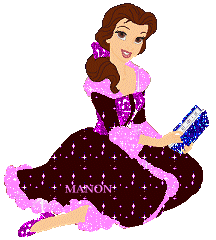
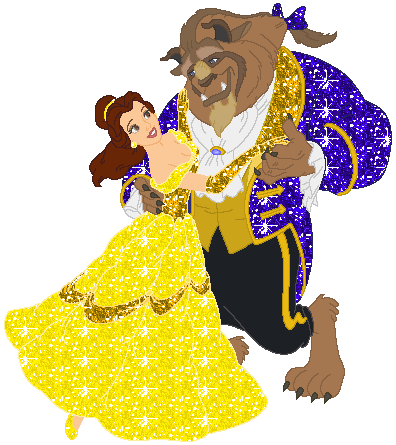
Shrek and beast are ugly in contrast to bella and fiona who are represented as beautiful.-binary oppostition(N)
Mulan – active heroine goes against stereotypes
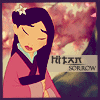
How they are typically represented:
· Princess Fiona is represented as the typical princess from fairy tales, speaking formally in matters of courtship and presenting high expectations of how she is to be rescued, who is to rescue her.
· The heroine is usually a princess/the hero is usually a prince (Disney films)
· The heroine is passive e.g. Cinderella, sleeping beauty, snow white
· The villain is scary, evil, funny looking. The colours they are frequently dressed in are dark purple/blue, black and green.
· The female heroes are subordinate to men- like in shrek 2, shrek drives the narrative forward.
· The villain is supernatural being or an animal
· Eddie Murphy put in the comedian role “black entertainer”,” racial/black clown” like in "shrek 2" and "shrek" he plays donkey
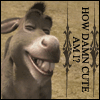
· Shrek has to conform to being “handsome” in order to be accepted
· Shrek could be seen as “the other” to the people in the kingdom
· The villains are seen as the “the other”
· Stereotypes used e.g women in domestic tasks/housewives
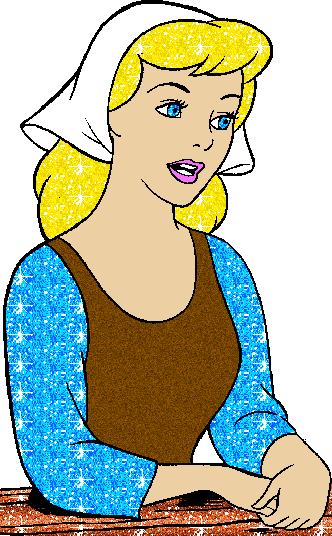
· Narrative roles used (prop)
· Genre expectations are fulfilled
Keywords I need to use:
Ø Hegemony
Ø Marxism
Ø Marxist capitalism-media and culture industries reinforce traditional gender roles and support the status quo by the dominant ideology
Ø Traditional values
Ø “Femme fatale” is a typical role used for a female villain this helps promote misogyny as the young audience and adult audience are encourage to hate women.
Ø Mainstream
Ø Male gaze-Laura Mulvey
Ø Passive audience
Ø Right wing
Ø American dream
How they are not typically represented:
.+.Mulan and princess Fiona are active heroines
.+.The beast and shrek are not seen as villains even thought they are seen as “ugly”
.+.Heroines are usually pretty
.+.Mulan is an ethnic minority which is not usually shown in many animated films.
.+.Bartender could be seen as a villain as he works in “the poison apple” where all the villains hang out, however they are shown in a more comical way rather then scary.
.+.Challenges stereotypes-encourage social change
Keywords I need to use:
Ø Pluralistic
Ø Progressive values
Ø genre expectations are subverted
Ø Myth- Shrek an ogre can be seen as a myth as he in underpinning a set of cultural assumptions.
Ø Going against the norms of society
Ø Post feminism
Ø Post modernism
Ø Left-wing
Ø Deviance-behaviour that turns away from the norm of which is generally accepted in society.
Other keywords I need to use overall:
Ø Binary opposition-(Strauss) audience are positioned in narratives to take sides and rewarded by the success of the side they identified with.
Ø linear narrative structure-(Todorov)
Ø parallel action
Ø parody
Ø pastiche
Ø prejudiced
Ø prequel
Ø protagonist
Ø alienation-emotional separation
Ø antagonist
Ø Anthropomorphism-the attribution to animals/inanimate objects of human feelings, emotions and other characteristics. This is done to help engage the audience with the experiment of animal characters.
Ø Archetype-an often repeated character type or representation which is instantly recognisable to an audience.
Ø Utopia-idealised world where everything’s perfect. Dyer sees these genres as offering fantasy escapism from everyday life problems and routines.
Ø Blockbuster
Ø CGI-computer generated imagery
Ø Cultural imperialism- the dominance of western/us society cultural values across the world.
Ø Disneyfication-removal of controversial sexual, morally ambivalent or violent content so that it is made suitable for family viewing.
Ø Genre theory-explains the appeal to audiences. Key theorist is Richard Dyer.-audiences are offered abundance, energy, excitement, spontaneity and community which are not presented in our daily lives.
Ø Golden age-an ideal period in history which looked back on wit nostalgia. The golden age of Hollywood films was 1930-1948
Ø Institution
Ø Knocking copy-newspaper articles which give negative, unflattering or embarrassing events in order to criticise individuals in the public eye. E.g. the royal family in the tabloid press.
Audience theories I will include:
I think the uses and gratification can be used for my main text which is Shrek 2 as it suggests the reason why the audience watch the film is for entertainment, escapism as it the sub genre is fantasy, moreover it is humorous because its subverts the convention of fairytales. On the other hand, the effects theory can also be applied as it is an American text American ideologies and values are likely to be picked up. I think the reception theory can be applied as well as the children are likely to pick up the hegemonic reading, whereas an adult or a teenage may grasp a negotiated reading or an oppositional reading. (A)
For representation of heroines Mulvey's Theory (R)
Feminism (R) how it is changed as Fiona (heroine) challenges how a typical women should look like. Therefore going against society’s “status quo”. (I)
Freud (A)
Pleasures audience get from watching animated films:
Identification with main protagonists
Nostalgic feeling from shrek, shrek 2 and hoodwinked
Scopophilic- from looking
Appeal of stars/celebrities
Entertainment
Escapism
Why heroes and villains are used?
To help audience identify
They may feel cheated if theses binary oppositions are not used
Friday, December 15, 2006

Feminism in disney films
At the forefront of their argument is an apparent desire to keep the heroine portrayed as a homemaker, and generally dependent upon males. While it is agreed that the early female characters, such as Snow White and Cinderella, were reliant on males, and generally possessed submissive qualities, there has clearly been a transformation since that time.
Godmothers:
The godmothers have been fairies, witches, and goddesses in the numerous variations of the story. In some Christian religions, a godmother is a "woman who sponsors a child at baptism and assumes responsibility for the child's religious guidance up to confirmation" (Websters 1990). In a more general sense, a godmother takes responsibility for caring for a child physically, emotionally and mentally.
In my texts:
Shrek 2:fairy godmother goes opposite of the norm as she doesn’t care about Fiona emotionally as she is not empathetic and sympathetic because she doesn’t accept Shrek even thought Fiona loves him. Instead she wants her son to marry Fiona, so she puts herself before Fiona which is not very caring.
Cinderella: fairy godmother helps Cinderella get to the ball so does care for her emotionally as that makes her happy. 
Sleeping beauty: there are numerous fairies, 3 good ones and one bad one which is the villain of the film.
Peter pan: Tinkerbell is a fairy but not a godmother. 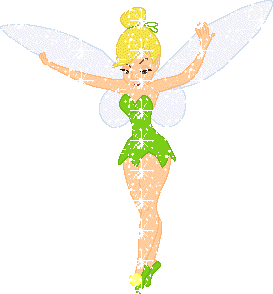
101 Dalmatians: no fairies/godmothers 
snow white and seven dwarfs: no fairies/godmother 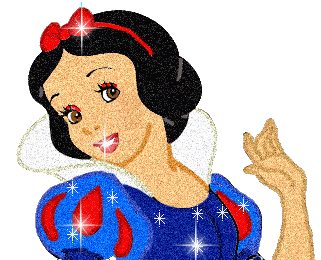
Representation of heroes/heroines:
Most beautiful person in the world:Physical beauty is always important especially in female characters. The human race has been obsessed with physical beauty most likely since it began. However, this gift is given first which implies that it is not as important as the gifts which follow. Still, we know that this princess will be beautiful and thus physically desirable.
Shrek 2: goes against this as Fiona is an ogre wife
All other historical texts this is applicable to this statement.
How heroes/heroines and villains are represented in disney animated films?
In fact, Disney’s idealized worlds rest largely on the artfulness of animation: good characters (e. g., Simban, the Sultan, Ariel, Pocahontas) display youthful traits such as big eyes and round cheeks (Lawrence 67) and are drawn in curves, smooth, round, soft, bright, and with European features; villains (e.g., Scar, Jafar, the Hun, Ratcliffe, Ursula) are drawn with sharp angles, oversized, and often darkly. Animation has available the same artistic capacity as illustration, where colour, shape, and size evoke certain psychological responses and attitudes towards an object.
Audience: (freud)
When fairy tales came into being "princes and princesses were as rare as they are today, and fairy tales simply abound with them. Every child at some time wishes that he were a prince or a princess--and at times, in his unconscious, the child believes he is one, only temporarily degraded by circumstances. There are so many kings and queens in fairy tales because their rank signifies absolute power, such as the parent seems to hold over his child. So the fairy-tale royalty represent projections of the child's imagination" (Bettelheim 1975).
Animation and audience:
Animated motion attracts our attention, mitigating its graphic fiction. Children, in particular, are attuned to animation because it visually stimulates their emotions (Moellenhoff 105) and Disney has shown itself "capable of understanding the way that children think and feel better than any other filmmaker" of our time (Rosenbaum 69). Observe any pre-schooler or grade schooler watch Disney–their eyes are wide and their bodies quake; laughter is spontaneous and fright discernible (Takahashi, 1991). As Bjoerkqvist and Lagerspetz (1985) found, children respond cognitively and physiologically to the meaning of the animation.
For children, animation pierces the consciousness and physical existence with experiential meaning, creating a realm of understanding unavailable via literacy or non-cinematic physical activity. Adults likely interact with cinema in a similar, though less transparent manner, given their socialization to self-control and public self-consciousness. Of course, viewers, young and old, recognize animation as fictive, not real: it’s just a cartoon! However, reality and fantasy do not compete in Disney, but "unite in a droll way" (Moellenhoff 114) exempting the stories from fidelity to extant or historical conditions.
Values and ideology:
Disney animations are unequalled in their narrative loyalty to dominant ideology and cultural values, consistently leading audiences to "realistically" believable fantasy lands. In the Lion King, for instance, Disney relies on our continuing cultural affection for royalty. Close attention to the narratives and character traits suggests that although Disney animations remain "naive, childlike, even childish" (Moellenhoff 114), they are not the fairy tales of imagination that children need (Bettleheim, 1977), nor are they socially progressive. Rather, Disney animations are self-contained confections mass-produced by adults writing, selling, and promoting themes for product licensing and private profits (Herman & McChesney 54)–with consumerist values and ideologies supportive of capitalist globalization.
 Snow White and the Seven Dwarfs (1937 film)
Snow White and the Seven Dwarfs (1937 film)
Representation:
The Queen is a fictional character in the Snow White and the Seven Dwarfs fairy tale and the Disney animated film based on it. The Queen was often referred to as "Queen Grimhilde" in Disney publications of the 1930s.The Queen is extremely beautiful but very evil and very proud and vain. She seduced and married a widowed King who had a daughter called Snow White with his first wife.(femme fatale) After the King died, the Queen sent Snow White to work in the castle and forced Snow White to abandon her title as Princess, similar to the situation of Cinderella.Aside from being the first ever classic Disney villain, the Queen holds symbolic status above the rest of the Disney villains and is regularly seen as their leader - although the most powerful is traditionally Maleficent, even she follows the Queen.The Queen ranks #10 in the American Film Institute's list of the 50 Best Movie Villains of All Time.
Wider context:
Snow white can cook all of the dwarfs’ favourite meals, and would clean their house while they are away. A feminist critique of the film or fairy tale quick to point out the creation of a subordinate role for the woman by the protective male hegemony. This would lead feminists to label the film as anti-feminist, with the usual paternal ideology driving the story.
Before Snow White, Grumpy had control over the dwarves, and realized his homo-erotic sexual fantasies by isolating the seven of them from the world of women to conduct their own drunken homosexual orgies. As twisted as this may sound, Disney is merely portraying the societal structure of a world at war, when the male and female spheres are divorced from each other by distance, and homo-erotic bonds grow between the males and separately between the females.
It is obvious the queen hates men- the only one in her court that we see is the huntsman, rudely ordered to do the queen's bidding as a slave. The queen operates as the dominant matriarch in a system excused of any sort of patriarchy. Men seem all but expelled from her kingdom.
Therefore, Cinderella's wicked stepmother cunningly chooses her words with care and -- unlike her awkward daughters -- never lets her temper get the best of her. She simply smiles an icy smile and handles matters in her own way ... behind the scenes.
Representation:
Cinderella uses everything short of physical force to persuade her stepmother that she has every right to attend. This makes her one of the more memorable Disney heroines. Actress Helene Stanley performed the live-action reference not only for Cinderella, but also for Princess Aurora in "Sleeping Beauty"
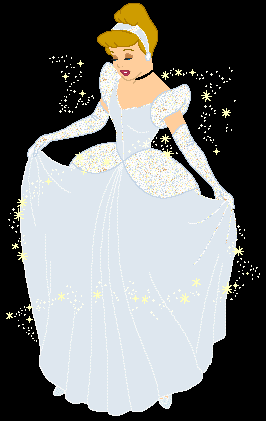
Until this movie, the role of Peter Pan had always been played by a young woman. Instead, Walt Disney chose to portray him as a 12-year-old boy. Disney explained the age by saying, "He is 12 years old forever simply because he refuses to grow up beyond that comfortable age."
Audience:
There are numerous other differences, including the revision of Tinker Bell's "death" (whereas in the original play she gets knocked out by a poison, in the animated film she gets knocked out by a bomb), which can be attributed to Disney's history of artistic license and reshaping of content to be more suitable for younger audiences.
Representation:
Tinker Bell (who wears a slim, green dress, slippers, and yellow panties) owes her shapely form to the Pin-up girls of the war.
Representation:
The version of Captain Hook who appeared in the Disney animated film adaptation of Peter Pan was a cowardly fool, Though he has his evil moments, Hook is overall a comically inept villain compared to other Disney villains such as Jafar or Maleficent. He apparently loves loopholes — after he promises Tinker Bell that he will not lay a finger (or a hook) on Peter, he then lays a bomb in Peter's hideout, since he didn't say he wouldn't do that. Captain Hook appears briefly in the animated film Shrek 2, where he plays the piano in a tavern, representing the musician Tom Waits who wrote and performed the song in question, Little Drop Of Poison.
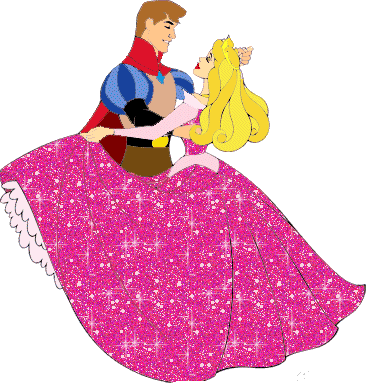 Walt Disney's Sleeping Beauty(1959 film)
Walt Disney's Sleeping Beauty(1959 film)
Representation:
Maleficent finds her target and strikes. Savouring her victory over the weeping good fairies, she gloats, "You poor simple fools, thinking you could defeat me, me! The mistress of all evil." But Maleficent had best not underestimate her moral challengers. Maleficent's fearfully unkind persona was voiced by Eleanor Audley, who had previously performed Lady Tremaine, the wicked stepmother in "Cinderella" (1950).
Princess Aurora's long, thin, willowy body shape was inspired by that of Audrey Hepburn. (Model)
Disney, in their version of Sleeping Beauty, creates the Princess Aurora as the epitome of womanhood and femininity, while Maleficent is her exact inverse. The structure of the Sleeping Beauty tale gives Disney the perfect opportunity for designing Aurora as the ultimate woman. The fairies are each supposed to give the girl a gift at her birth that will make her the picture of perfection. In Disney's Sleeping Beauty, the first fairy grants her beauty, including "lips that shame the red, red rose" and "sunshine in her hair." Maleficent, in contrast, has a sharp, pointed face, sneering lips, and no hair at all. The gift granted by the second fairy is the gift of song. Princess Aurora has a beautiful, melodious voice, while Maleficent's voice is scratchy and low.
Throughout the movie the direct contrast between Aurora and Maleficent is very apparent. Maleficent is drawn surrounded in gloom, dressed all in black, her face a pale and hideous shade of green; Aurora, with her soft pink complexion, wears light blue dresses and is surrounded by sunshine. Maleficent sits, smoldering with rage in a distant, gray castle, encircled in storm clouds, while Aurora waltzes about in the warm, green woods. Aurora converses with cute, furry animals; Maleficent lives among dim-witted, boorish, troll-like henchmen. (Binary opposition) Maleficent is active and clever and unruly. She is toweringly tall and devoid of feminine feature (such as hair) and the complete opposite of the standard of feminine beauty set by Aurora.
She is a lonely woman. The three "good fairies" have each other and are motherly figures who end up raising the princess, but Maleficent is without anyone. As the green fairy, Fauna, explains: "Maleficent doesn't know anything about love or kindness or the joy of helping others." A woman's life should revolve around love and the joy of helping others, but these are qualities in which Maleficent is deficient. By presenting Maleficent as unwomanly, Disney is able to make her a monstrous anomaly and therefore to deny the threat of feminine power. (Feminism)
maleficent is sourround by green flames this connote her jealousy and fury when she is not invited to the birth cermony of princess aurora. she is given horns which connotes that has devil like qualaties. around her neck it looks like bat wings which is animal which not very liked. they use the diegetic sound of thunder when maleficent appeared this was because this would frighten children and make them feel alienate towards her. as she lived in the "forbidden mountain" which was isolated from the kingdom where it was dark,gloomy and thundery potraying malaficent personality.also the music used when malaficent would appear on screen would be loud dramatic music.furthermore, as she lived at the top of the mountain its could connote how she is superior and powerful.
aurora is shown sweeping/cleaning at the age of 16 which in more liberated times she would be seen as an adult in other words a women this was shown to represent the sterotypical role women had back then.
Representation:
The prince must fight his way through the thorns, hacking them to pieces valiantly with his sword. Upon surpassing this obstacle, he must then deal with the evil Fairy. She assumes the form of a horrible dragon (black and green, of course), and they do battle, whereupon the prince kills the dragon. This represents a considerably more significant effort on the part of the prince, as well as creating a sort of test to demonstrate that he is truly worthy of the princess.
Audience:
It also serves to put some action into a tale otherwise devoid of any violence, again appealing to youths who are used to action-packed cartoons.
Audience:
By making Maleficent an inherently evil person, Disney sets up an evil for the audience to hate, and thus an easier conflict to identify. Disney seems to consider this especially necessary in dealing with young children. It makes all the sticky moral questions go away, and the children can simply hate the witch.
Young girls watching the Disney version of Sleeping Beauty see an outlet for their feelings of strength and power in Maleficent at the same time they desire to be like the ideal set for them in Aurora. They come to feel this good woman/bad woman dichotomy within themselves-- and to believe these are two separate selves which are incompatible with one another. Disney makes the "good woman" and the "bad woman" so separate-- such complete, binary opposites-- that it seems impossible that they can co-exist within one person. A girl ends up feeling that in certain situations she is one, and in other situations she is the other; she aspires to be like the ideal woman, presented in Aurora, but she enjoys using power like Maleficent. She will see a division between the kind and loving, and the powerful and strong within herself, rather than seeing the combination and the way they work together within her and combine to create one, complete personality.
theorys:(Freud and Mulvey theory applied)
Spindle in sleeping beauty: A spindle is "the thin rod in a spinning wheel serving to twist and wind the thread" (Websters 1990). The spindle can have a shape tip and usually does in illustrations of the story. In psychological interpretations of this tale, the spindle is considered to be a phallic symbol.
Wider context:
Fairy tales were used by a number of parties in the Weimar Republic as political propaganda, primarily in order to indoctrinate the youth to the party line. The Social Democrats, the Communists, and the National Socialists all used fairy tales extensively. The messages contained in fairy tales such as the Grimms' were particulary useful for conservative groups, because classic tales such as "Cinderella" and "Sleeping Beauty" "reinforced the patriarchal order and gender specification in German upbringing." Because they were already well-suited to the message some political parties wanted to convey, "as far as young listeners and readers were concerned, the fairy tale came to be used in a conservative sense that had political overtones."
The Social Democrats and Communists attempted, largely unsuccessfully, to write new tales or rewrite old ones in order to introduce their own morals, social views, and political agenda into children's literature. These were not very successful for a number of reasons, including the fact that audiences of the tales did not appreciate having new endings tacked onto their classic tales, and preferred tales which did not represent a challenge to the status quo.
In addition to indoctrinating young people, fairy tales like "Sleeping Beauty" became a form of political propaganda which bolstered the Nazis' popularity among the general populace. By comparing Hitler to heroes in beloved, univerally known tales, the Nazis shored up support for their political activities and reinforced the image of Hitler as the unerring Führer. An example of this sort of glorification is Adolf Holst's Der Drachentöter ("The Dragonslayer"), in which Hitler is the prince who battles hell to free the princess (Germany) and wake it up -- "and all of the people cried out: 'Heil!'"
the film also helps reinforce the status quo by using the song lyrics of "hail to the king,hail to the queen,hail to the princess aurora." this is a dominant ideolgy of respecting royalty which is reversed in shrek 2. as shrek does not respect royalty but is still seen as a likeable character.
One Hundred and One Dalmatians (1961)
Representation:
Cruella De Vil: The villain of the film; an eccentric rich woman who has the puppies kidnapped in order to turn them into fur coats. She is a social parasite; she visits her ex-classmates, keeping a pretence of friendship, while taking advantage of their fears.She'll do whatever she has to do to get those beasts and their coveted coats. And once in her evil hands, those puppies must never leave "Hell Hall" alive. Cruella may live for fur -- but the pups, well, she doesn't give much thought to them. Created by Marc Davis, talented animator of both Maleficent and Cinderella, Cruella is considered a masterpiece of animation art and design.
links:
http://en.wikipedia.org/wiki/Cinderella_(1950_film)
http://disney.go.com/vault/archives/villains/tremaine/tremaine.html
http://disney.go.com/vault/archives/villains/maleficent/maleficent.html
http://en.wikipedia.org/wiki/List_of_Disney_Villains
http://en.wikipedia.org/wiki/Peter_Pan_(1953_film)
http://en.wikipedia.org/wiki/Walt_Disney
http://en.wikipedia.org/wiki/Snow_White_and_the_Seven_Dwarfs_(1937_movie)
http://lass.calumet.purdue.edu/cca/gmj/OldSiteBackup/SubmittedDocuments/archivedpapers/fall2002/Artz.htm
http://www.gwu.edu/~folktale/GERM232/sleepingb/Disney.html
http://disney.go.com/vault/archives/villains/cruella/cruella.html
http://www.gwu.edu/~folktale/GERM232/sleepingb/Disney_vs_grimm.html
http://www.gwu.edu/~folktale/GERM232/sleepingb/Nicks_base_page.html
http://www.purewestmedia.com/writing/snowwhite.html
http://www.imdb.com/title/tt0053285/trivia
http://studentweb.tulane.edu/~mkuczyns/home.html
Thursday, December 07, 2006
The Golden Age of American animation is a period in American animation history that began with the apperance of sound cartoons in 1928, peaked during the mid 1940s, and continued into the 1960s when theatrical animated shorts slowly began losing to the new medium of television animation. Many of the most memorable characters emerged from this period including Mickey Mouse, Donald Duck, Goofy, Bugs Bunny, Daffy Duck, Porky Pig, Droopy Dog, Popeye, Betty Boop, Woody Woodpecker, Tom and Jerry, and the Pink Panther and an incredibly popular adaptation of Superman. Feature length animation also began during this period, most notably with Walt Disney's first films: Snow White and the Seven Dwarfs, Fantasia, Pinocchio, and Bambi.
http://en.wikipedia.org/wiki/The_Golden_Age_of_Hollywood_animation
Friday, December 01, 2006
Hollywood animations formulaic?
There is a clip on this site as well as information on how Computer-generated movies have led to a multi-billion dollar boom for US animation with hits such as Finding Nemo and Shrek.
Sunday, November 26, 2006

Fairy godmother is the most powerful women in the “Shrek 2” as she has the magic wand that has connotations a phallic object. The phallic object represents “power” and is used to stop the male audience feeling castrated. Moreover, it conveys how patriarchy still exists as to have “power” you need to have a penis/ be un-castrated. Although, the fairy godmother has “power” she is still not a likeable character and therefore seen as a villain which reinforces misogyny.
In the scene where Shrek and his friends are trying to get into the castle. Shrek is shown riding on a white horse which reinforces the stereotypes of a typical hero at this point the audience are position to identify with him as the hero. Therefore the audience experience narcissism as they wish to be like him ideally another scene where the audience experience this is when shrek wakes up and finds out he is a human, the point of view shot helps create a sense of identification with him. furthermore in this scene, three women are all over Shrek, which again reinforce patriarchy.
Classic realism is applied as “Shrek 2” follows a Todorovian narrative structure. It have Starts of with an equilibrium – Shrek and Fiona on their honeymoon, then the dis-equilibrium begins when they receive and invitation from Fiona's parents. Finally, the resolution when Shrek and Fiona are accepted my the people in “far far away”.
Wednesday, November 15, 2006
Laura Mulvey (a feminist film theorist) came up with the theory of the “male-gaze”. The paper she wrote based on it was called “visual pleasure and narrative cinema” (1975)
Muvey believed that the spectator (audience) were positioned to see things from a male point of view “male gaze” therefore women were objectified (taking away their human qualities and turning them into an object so that their purely there to be looked at) as a result of this patriarchy would be reinforced. This could be because seeing women represented in that way would give the spectator pleasure( these pleasures may be erotic, voyeuristic, sadistic or scopophilic) but at the same time anxiety would be produced if an phallic object or fetish object (such as leather, whips, boots, stockings..) were not exposed because according to Freud by looking at a women in that way would make the man feel castrated which is a man biggest fear as that would be taking away his power. Furthermore, as men liked to have power could suggest why misogyny was introduced which could be for the reason that when men were younger they were controlled by their mothers and the factor that women have the ability to reproduce by giving birth could make them feel very very jealous.
Narcissism is used in cinema when we identify with the hero as that is how we would want ourselves to be ideally.

She made use of Freud’s psychoanalytic theory. Freud was a psychoanalysist, who looked at the human mind and tried to interpret human behaviour, he came up with this theory around the 1900.
He used an iceberg to explain his theory. He stated the top of the ice berg which was about 1/10 was how conscious we were and then bottom of the iceberg which was 9/10 was our unconscious so how much we are not aware. For example he said our dreams was when our unconscious came out and when we have blurted out things which we were not meant to say or don’t know why we said. He used the term resistance for those who refused to accept his theory about the unconscious and repression for those who did not want to know.
Wednesday, November 08, 2006
http://www.youtube.com/watch?v=FkhrcPAbWGE
Advert 1: Beeper service
This is a traditional advert as it conforms to stereotypes of women being dumb. They show both women playing the role of a "blonde bimbo".
http://www.youtube.com/watch?v=kcbhHOZZXnI
Advert 2: Flake chocolate
The women in this advert is shown at home on her own and she is exposed in very skimpy clothes and they show her eating the flake chocolate which could be interrupted as a phallic object being the male penis as she starts touching her body after taking her first bite of the chocolate.
http://www.youtube.com/watch?v=QOxm7KrUj9c (longer version)
and
http://http://www.youtube.com/watch?v=w-oAynhMrzI&mode=related&search= (shorter version slightly diffrent)
Advert 3: Pepsi advert
This definitely challenges the traditional role of women as they show Beyonce Knowles and Jennifer Lopez fighting with men while David Beckham is just sitting there watching them. So the advert shows how gender roles have been reversed. This advert is post feminist as Jennifer Lopez and beyonce Knowles are wearing tight cat suits so this would reinforce the "male gaze" but they are shown as independent women as well.
Monday, November 06, 2006
Comment on each of the following, giving yourself a grade with an explanation outlining why:(Grading should be1-5: 1 = excellent, 2 = v. good, 3 = good/average, 4 = poor, 5 = v. poor)
Attainment :2/3
I think my understand of the work is quite good
Effort:1/2
This is because I put more effort into my blog work then class work because I am enjoying the topic I have chosen to do and the blog motivates me as it well presented and the colours and pictures help me remember the information.
Punctuality:1/2
I think I am on time to most of my media lessons but I think I only ever been late once which was today but I had a really good reason and that was because I sorting my UCAS out.
Submission and quality of homework :1 and 3
I always submit the work in on time so that what the 1 is for however I think the quality would be a 3.
Ability to work independently: 1
I think I work very well independently and I think the my blog proves it.
Quality of writing :3
We have not really done any work which has been assessed yet so I am basing this on last year.
Organisation of Media folder :3
I got all my notes in the folder but need to put them in order.
Oral contributions in class:2/3
I contribute to lessons more,more then I did last year.
Standard of Module 5 blog :1/2
This is because I enjoy the work I am doing on the blog because I got choose what I wanted to do.
Standard of Module 6 blog : 3
I think the presentation of my blog is good but the quality of writing needs to be improved.
three targets/areas for improvement:
1.Improve quality of writing
2.Improve module 6 blog
3.Organise media folder
Thursday, November 02, 2006
'Shrek 2' is children's favourite film
Monday, November 29 2004, 09:56 UTC - by Daniel Saney
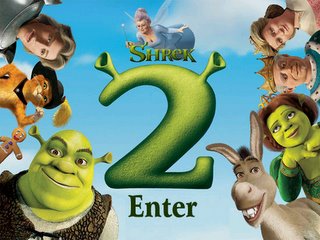
Shrek 2 won the award for best film in the children's BAFTAs yesterday.The category was the only one whose result was decided by a poll of fans themselves, in which over 6,000 children participated. In second place came Harry Potter and the Prisoner of Azkaban, which was best feature film in the eyes of BAFTA experts. A Special Award for outstanding creative contribution to children's film and televison went to Florella Benjamin, former Playschool presenter. In 2001 she was given an OBE for her work in broadcasting.Dick And Dom In Da Bungalow was recognised with two awards, for best entertainment and best presenters for Richard McCourt and Dominic Wood.
http://www.digitalspy.co.uk/article/ds17309.html
Tuesday, January 4 2005, 08:40 UTC - by Daniel Saney

Animated sequel Shrek 2 was the biggest-selling VHS/DVD of 2004 in the United States, selling a total of 37 millions units, according to the Hollywood Reporter. Of the 37m copies sold, 21.6m were on DVD format. Combined sales of DVDs and VHS copies have amassed around $458m in total. In the hysteria of buying the sequel, there has also been a great boost for the sales of the original Shrek, bringing the sale of an extra 5.6m units. The film has now sold an estimated 47m copies.Though the statistics are not yet final the movie is expected to be followed in the rankings by The Lord of the Rings: The Return of the King, Harry Potter and the Prisoner of Azkaban and Spiderman 2 in the US chart.Shrek 2 is the biggest-selling home video release ever in the UK.
http://www.digitalspy.co.uk/article/ds18069.html
Friday, January 13 2006, 21:13 UTC - by Fiona Edwards

Justin Timberlake has been disturbed by reports that he will play girlfriend Cameron Diaz's cousin in the third Shrek movie.The pop singer is set to voice the role of Prince Artie, the future King Arthur in Shrek III. However, on finding out that the character will not be a love interest for Princess Fiona, but will actually be her cousin the star was a little weirded out."I believe our characters in the movie are cousins, so that's disgusting," he moans. "I mean, I'm from Tennessee, so I heard it does happen where I'm from. But you know, I don't think it's such a good thing universally."The star also has 'doubts' over the suitability of the movie for children: "It's a kid's movie. I don't think cousins should be doing that kind of thing."
http://www.digitalspy.co.uk/article/ds28107.html
Wednesday, March 22 2006, 09:56 UTC - by Daniel Saney
The third movie in the Shrek series has been given a slightly more imaginative title than Shrek 3 - Shrek The Third, according to Empire.Mike Myers, Cameron Diaz, Antonio Banderas and Eddie Murphy will reprise their roles for the new instalment which will see the green ogre and his princess strive to return to their swamp and leave the task of ruling Far, Far Away, but first they must find their successor.Meanwhile, Justin Timberlake enters the fray as King Arthur.
http://www.digitalspy.co.uk/article/ds30746.html
Sunday, July 2 2006, 08:22 UTC - by Susanna Regan
http://www.digitalspy.co.uk/article/ds35438.html
this is a link to an article i found on where cameron diaz think working in animated movies such as shrek are fun.
Thursday, October 26, 2006
Book research!!!
Books that I looked at which are useful:
Makinnon,Kenneth (2003) : Representing Men: Maleness and Masculinity in the Media. London, Arnold.
Neale, Steve (2002) : Genre and contemporary Hollywood. UK,BFI.
Gauntlett, David (2004) Media, gender and ethnicity. London, Routledge.
Lacey, Nick (2002) : Narrative and genre, New York, Palgrave
Tasker, Yvonne (2004) : Action and adventure cinema, USA, Routledge
This had a paragraph about shrek which was useful.
Tim o Sullivan, Brian Dutton and Philip Rayner (2003) : Studying the media (3rd edition) London, Arnold
Books I am going to look at:
Gifford, dennis (1988) : the great cartoon stars: a who's who. UK, Bloomsbury Books.
Barrier, Micheal : Hollywood cartoons: American animation in its golden age
Giannalberto, Bendazzi : Cartoons: One Hundred Years of Cinema Animation
Lacey, Nick : Introduction to Film
Maltby, Richard (1995) : Hollywood Cinema
Cook, Pam and Bernink, Meike (1999) : The cinema book. UK, BFI
Ross, Mandy (2002) : Changing Role of Women. Great Britain, Heinemann library.
Wednesday, October 11, 2006
 (Dreamworks' hopeful founders in 1994: From left, Jeffrey Katzenberg, Steven Spielberg and David Geffen)
(Dreamworks' hopeful founders in 1994: From left, Jeffrey Katzenberg, Steven Spielberg and David Geffen)Spielberg (film director and founder of Amblin Entertainment),
Katzenberg (former head of The Walt Disney Company's film studios),
Geffen (founder of Geffen Records)

DreamWorks Animation SKG is an American animation studio, producing primarily feature animated films. DreamWorks Animation was formed by the merger of the feature animation division of DreamWorks SKG and Pacific Data Images (also known as PDI). Originally formed under the banner of DreamWorks SKG, it was spun-off into a separate public company in 2004.


Its films are currently distributed by Paramount Pictures (in turn owned by Viacom) who acquired the rest of DreamWorks SKG in February of 2006. DreamWorks Animation maintains two studios: the original DreamWorks feature animation studio in Glendale, California and the PDI studio in Redwood City, California in the Silicon Valley region.
In 1997, DreamWorks SKG signed a co-production deal with PDI to form PDI's subsidiary PDI, LLC (PDI owned 60% of PDI, LLC while DreamWorks SKG owned 40%). PDI, LLC would produce computer-generated feature films beginning with Antz (1998). In the same year DreamWorks SKG produced The Prince of Egypt using traditional animation techniques.

In 2000, DreamWorks SKG created a new business division, DreamWorks Animation, that would regularly produce both types of animated feature films.
The traditionally animated feature films were produced by the division's Southern California branch. DreamWorks SKG acquired majority interest (90%) in PDI, reforming it into PDI/DreamWorks, the Northern California branch of its new business division.
The business division separated from its parent in 2004, forming DreamWorks Animation SKG, Inc. and purchasing the remaining interest in PDI as well as its subsidiary PDI, LLC.
Since 2004, DreamWorks Animation is dedicated solely to producing CG animated films in-house. No more traditional 2D animation is expected.

DreamWorks Animation also has a partnership with Aardman Animations, a stop-motion animation company in Bristol, England. This partnership has DreamWorks participating in the produciton of stop-motion films in Bristol, and also has Aardman participating in some of the CG films made in the US.
http://en.wikipedia.org/wiki/DreamWorks_Animation_SKG
The only major studios DreamWorks have not co-released movies with are :
and
 Walt Disney Pictures.
Walt Disney Pictures.
this is not surprising, given Disney's hostile relations with DreamWorks co-founder Katzenberg: when Disney’s then-second in command, Frank Wells, died in a helicopter crash, CEO Michael Eisner refused to promote Katzenberg, firing him after he pushed the issue. Katzenberg then filed a lawsuit against Disney to recover money he felt he was owed and settled out of court for an estimated $100 - $250 million (the actual amount remains secret).
representation of the big bad wolf:

A mixture of the Wolf in Little Red Riding Hood, and The Three Little Pigs. He is a friendly misunderstood crossdresser (apparently wearing Lil Red's grandmother's clothes) and on good terms with the three little pigs. This depiction, along with a transgendered bartender and Pinocchio's expansive nose in Shrek 2, raised the anger of some conservative groups who objected the film's sexual content. However, these concerns were widely made fun of in the media. In Far Far Away Idol he sings "Hungry Like the Wolf". In Shrek 2 Fairy Godmother calls him a gender confused Wolf. His line when every one looks at him confused is, "What?".
Sunday, October 08, 2006
I think my study is sort of similar to anikas as in her one she talks about women superheroes and my study mentions heroines.It also shares the same sub-genre as mine as her main text includes fantasy elements
Furthermore, we looked at similar site on women representation for instance http://mediaknowall.com/gender.html#Femininity
Keywords that overlap with both are studies are:
A- List ,Femme fatale, Stereotype,Marxist feminism,Narrative and Protagonist
In her text it shows women playing and active role similar to shrek 2 Fiona doesn’t play a passive role as she does martial arts in the begin of the film when Shrek is hanging upside down
What I learnt from looking at anika’s blog is a website which talks about women superheroes and how they are very rarely portrayed as superheroes and often played the helpless female who had to depend on the man's strength to resolve the problem. The male superheroes were constantly coming to the aid of a female and even when the female comic book superhero teamed up with her male counterpart she always took orders from him.
and
The drawing of the women in the comic books had an effect on how successful the titles were. Those that were portrayed with curvaceous figures and were very beautiful were more successful than the women who were drawn as ordinary people
This is useful as animation and comic books are similar and it could link in with how in Shrek 2 Fiona’s body as ogre is not slim and neither is fairy godmothers yet the film is still successful.
The keywords that overlap mine and kiran’s studies are:
Binary Opposition, Empathy, Fantasy, Gender, Hero, Propp, Vladimir (1895-1970), Adventure Film, Althusser, Louis (1918-90) and Blockbuster
More similarities are both our primary target audiences are children and both our main texts shares fantasy and Adventure elements. The institution that produces Spiderman Is a big budget Hollywood institution called Columbia pictures which frequently co-financed and co-distributed films with DreamWorks SKG however DreamWorks animation is an independent institution which has not collaborated with any other institutions.
What I learnt from looking at kiran’s blog is a website that could be quite useful
http://www.aber.ac.uk/media/Documents/short/realrev.html
This is useful as its a university essay that talks about how children watch the media, and how they intake it. This will be useful to my study as my hypothesis mentions the target audience of my main text which is shrek 2.
Moreover, both texts are set in America
The keywords which I probably going to be using which are the same as hers are:
Stock character
Protagonist
Genre:
Genre Theory: Narrative theory: Propp, Vladamir (1895- 1970):
What I learnt from looking at her blog is about A Russian Formalist theorist, Viktor Shklovsky-Who is like Propp split narrative structure into story and plot.
Friday, October 06, 2006
CELEBRITIES
An individual who has become the focus of media attention and is therefore widely known and recognised by the public.
Celebrities used in Shrek 2:


Cameron Diaz as princess Fiona


Mike Myers as Shrek

Eddie Murphy as donkey

Antonio Banderas as puss in boots


Julie Andrews as the queen
CGI-computer generate imagery
The application of computer software to generate a film image
DEVIANCE
Behaviour that “divates”(turns away) from the norm or that which is generally accepted within a socieity. In shrek 2 shrek disrepects the king and queen when he goes to their castle by burping.
DOMINANT IDEOLOGY
The belief systhem that serves the intreasts of the dominant ruling elite within society, generally accepted as common sense by the majority and reproduced in mainstream media texts.
Dominant ideology establishes a hegemonic postion in society which is reinforced by media representations and is consequently diffcult to challenge.
The term arrives from a marxist theory and is addressed in detail in the work of Gramsci,Althusser and Hall.
HEGEMONIC READING
A response to a text in which the reader shares the value systhem of the text and accepts the perferred reading without question.
ELITE
A small group in a society which claims leadership privilages as a result of expertise in terms of knowledge/skill,in a particular field.
Elites exisits in broadcasting institutions where they are determine programme content and representations .
In terms of audience,elites may be viewed as sought-after niche markets
ELITISM is the practise of seperating from the masses through claims of specialists knowledge/ability.
FALSE CONSCIOUSNESS
Marxist term for the effect of dominant ideology on the awareness of workers with regard to their real economic and local capitalism.
FANTASY
A genre built around an artificially constructed reality which could never exisit in real life,often involving classical mythology/fairytales.

An explanation of the role played by genre in a diffrentiating media texts and aligning audiences. Genre theorists consider the relationship between audiences,media texts and media producers and the ways in which genre,particulary in film,can be used by producers to target specific audience groups,with predictable expectations of audience numbers and responses.
e.g RICHARD DYER (1973) argues that genres are pleasurable because they offer escapist fantasies into fictional worlds which remove the boredom and pressures of reality. He sees these worlds as utopian,offering the audience abundance,energy,excitiment,spontaneity and community-none of which are present in their everyday lives.
GRAMSCI,ANTONIO (1871-1937)
Leader of the italian communist party, imprisoned by Benito Mussolini from 1926 until his death in 1937.
Gramsci used the term hegemony to describe the way in which the dominant elite can maintain its power over the economic,political and cultural direction of society.
The values that sustain elites in power are reproduced every day by the media and made to seem like the common sense views id the majority, so that any challenge to them is marginalised.
